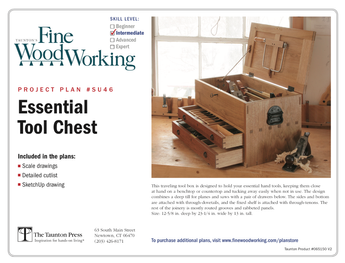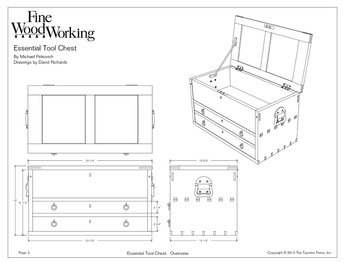I’ve been asked to design a dining room table and I’m looking for guidance on overhangs along the length and width of the table. How much can I safely get away with? Would I be able to safely get by with 1′ along each end and 6-8″ on each side? Would I be able to safely get the overhang any more in either dimension? The top will be 1.75″ thick finished walnut and 7′ x 4′ (HEAVY!). The base will be in the style of Stickley’s director’s table.
Discussion Forum
Get It All!
UNLIMITED Membership is like taking a master class in woodworking for less than $10 a month.
Start Your Free TrialCategories
Discussion Forum
Digital Plans Library
Member exclusive! – Plans for everyone – from beginners to experts – right at your fingertips.
Highlights
-
Shape Your Skills
when you sign up for our emails
This site is protected by reCAPTCHA and the Google Privacy Policy and Terms of Service apply. -
 Shop Talk Live Podcast
Shop Talk Live Podcast -
 Our favorite articles and videos
Our favorite articles and videos -
E-Learning Courses from Fine Woodworking
-
-












Replies
The overhang on my family's table from 1938 is 6" all around and the pull out leaves add 14" to each end while out. So that's a full 20" of overhang at each end. 1ft is fine.
Good to know. I hope I can build furniture to last at least that long!
That's not much overhang at all for a top that thick. If it's the table base I have in my mind (with the huge tall apron) double-check your knee clearances. 6" might not be enough to actually belly up for a meal. Consider battens when you get up around 10" of overhang on the long edges. Even thick wood can sag under it's own weight.
I always thought that table screamed for long drawers on the ends.
Very helpful! The wider the overhangs, the better and maybe battens every 15" will be the ticket to make sure there is adequate support. Yes, I think some drawers would be a welcome addition at the ends.
...Just looked it up, is it the #631?
Yes, that general style.
I respectfully disagree about needing ANY sort of under-slab support for the overhangs on a 1-3/4” thick walnut tabletop. If the wood has been properly dried and joined, any “sagging” under its own weight in the overhang dimensions that we’re talking about here (~12+”) will be measured in hundredths of inches, immaterial for a dining table (we’re not playing marbles here). Attaching batons to the underside (in a dimension to not be seen from the room) that are designed to allow for seasonal wood movement won’t materially add enough stiffness to make a difference. I’ve made 30-40 tables over the years, none of which required under-table batons for overhangs.
As MJ has noted, The Stickley pedestal base that you are considering has such tall aprons that they will absolutely get in the way of your knees if the overhang isn’t enough. With a table width of 48”, you can easily have 12-14” overhangs and still have a 20-24” footprint at the floor which will provide excellent stability, even for such a large table.
There are plenty of guidelines available for how much room is necessary for knee clearance, but it’s easy to mock up on your own. Simply sit in the chair to be used (if possible) and pull up to a table as if you’re going to eat; you’ll probably have several inches between your belly and the edge of the table. Have someone measure the distance from the edge of the table to your knees. Add at least an inch or two and this is the MINIMUM table overhang that you need for comfort. FWIW, if the pedestal went all the way to the floor, you would need even more clearance for your feet/toes. Don’t be misled by standards for knee clearance at bar-height or counter-height seating, as humans sit differently at these heights (legs are more vertical) and can get away with less overhang. Similar minimum overhangs should be used at the two ends of the table, but I often feel like a greater overhang “feels right” aesthetically.
Please recognize that your overhang situation is somewhat unusual for a dining table because the VERY tall aprons effectively make the base a pedestal, unlike a legged table where there is generally nothing in the way at knee height.